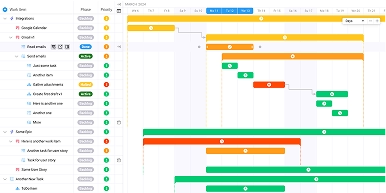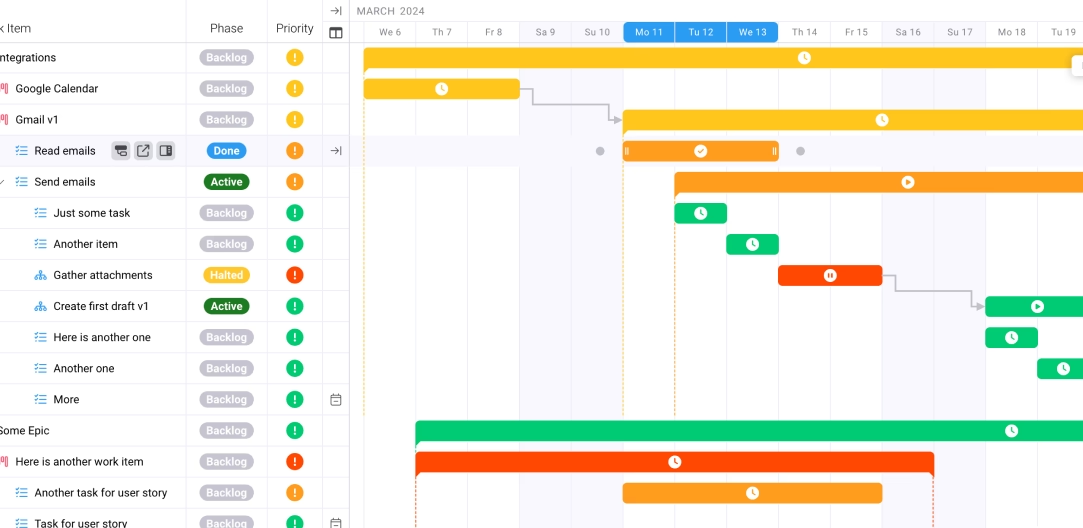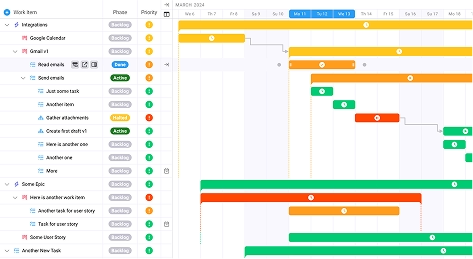
The Complete Guide to Selecting the Right PSA Software
Key takeaways:
Most professional services firms lose 15-20% of potential revenue due to disconnected systems, manual processes, and poor resource visibility. The solution? Professional Services Automation (PSA) software. But selecting the right PSA software requires more than choosing the highest-rated platform—it demands a strategic approach aligned with your firm's unique operational needs, growth trajectory, and client service model. This complete guide to selecting the right PSA software will equip you with the framework, criteria, and insights necessary to make a confident, informed decision that transforms your operations.
The High Cost of Wrong Technology Decisions
Professional services organizations face mounting pressure to deliver exceptional client experiences while maintaining healthy profit margins. The professional services industry is expected to reach $10.1 billion by 2032, valued at $6.4 billion in 2023, yet many firms struggle with the operational foundations needed to capture this growth opportunity.
The wrong PSA software decision creates devastating ripple effects across your organization. Implementation failures drain resources, frustrate teams, and delay ROI by months or even years. 44% of employees admit they regularly postpone tasks that require software they find frustrating, directly impacting project delivery and client satisfaction.
Consider the hidden costs beyond the initial purchase price. Poor user adoption means your team continues relying on spreadsheets and disconnected tools, creating the exact data silos you sought to eliminate. Integration challenges force manual data transfers between systems, introducing errors and consuming valuable billable hours. Inadequate reporting capabilities leave leadership flying blind when making critical resource allocation and pricing decisions.
The stakes are particularly high given current market dynamics. 82% of decision-makers are extremely or very willing to make significant technology investments in the next 12 months, reflecting both the urgency of digital transformation and the competitive disadvantage of outdated systems.
Understanding What PSA Software Actually Does
Before evaluating specific platforms, you need clarity on what Professional Services Automation software should accomplish for your organization. PSA software serves as the operational nerve center for service-based businesses, unifying previously fragmented systems into a single source of truth.
Core PSA capabilities extend far beyond basic project management. Modern platforms integrate project planning, resource scheduling, time and expense tracking, billing, financial management, CRM functionality, and business intelligence into one cohesive system. This integration eliminates the constant context-switching between applications that drains productivity and creates data inconsistencies.
The value proposition is compelling. Firms using PSA software report 28% higher project margins and 17% faster invoice cycles, directly addressing two of the most critical performance metrics for professional services organizations. These improvements stem from increased visibility, automated workflows, and real-time financial tracking that enables proactive project management.
Think of PSA software as the difference between managing your firm through disconnected tools versus operating from a unified command center. When a project manager updates task progress, that information immediately flows to resource managers, finance teams, and client-facing dashboards. When consultants log time, that data instantly impacts project budgets, utilization reports, and invoice preparation. This real-time connectivity transforms how your firm operates.
Client service businesses require comprehensive features in their project management software including resource planning and financial management, highlighting the interconnected nature of professional services operations. Attempting to address these needs through separate point solutions creates the integration complexity and data inconsistency that PSA software aims to eliminate.
Recognizing When Your Firm Needs PSA Software
Timing matters when implementing PSA software. Move too early, and you may lack the operational complexity to justify the investment. Wait too long, and inefficient processes become deeply embedded in your culture, making change more difficult.
Several clear indicators signal readiness for PSA software adoption. Organizations should consider PSA software when experiencing manual processes consuming excessive administrative time and difficulty tracking project profitability. If your finance team spends days compiling utilization reports from multiple spreadsheets, you're ready. If project managers can't accurately forecast project completion dates due to unclear resource availability, you're ready. If leadership lacks confidence in the accuracy of project profitability data, you're definitely ready.
Growth often triggers PSA software needs. When you can no longer manage your operation through personal relationships and informal communication, you need systematic processes supported by appropriate technology. This inflection point typically occurs between 15-50 employees, though it varies based on project complexity and client diversity.
Resource management challenges provide another clear signal. 60% of professional services leaders say technology updates are needed to substantially improve resource management, recognizing that manual resource allocation cannot support the complexity of managing multiple projects, diverse skill requirements, and competing priorities.
Your billing and invoicing process offers additional clues. If you regularly experience billing delays, dispute client invoices due to unclear time tracking, or struggle to maintain consistent billing cycles, PSA software addresses these operational bottlenecks directly. The time tracking and automated invoicing capabilities eliminate the manual processes that create these frustrations.
The Strategic Framework for Selecting the Right PSA Software
Successful PSA software selection requires a structured evaluation framework that balances multiple critical dimensions. Many firms make the mistake of prioritizing price or features without considering how well a platform aligns with their operational model and growth strategy.
Selecting the best PSA software requires careful evaluation of integration capabilities, scalability requirements, and specific industry needs. This comprehensive approach prevents the common pitfall of selecting software that excels in one area while creating significant limitations in others.
Industry Specialization Matters More Than You Think
Generic project management software lacks the deep functionality required by professional services firms. Consulting firms need rate cards measured in days rather than hours. Agencies require creative workflow tools and campaign tracking. IT services providers need tight integration with technical management systems.
Vendors with professional services expertise build their platforms around the actual workflows, billing models, and reporting needs of service organizations. This specialization manifests in subtle but important ways—from how the system handles retainer agreements to the granularity of utilization reporting to the flexibility of billing rules.
Don't underestimate the value of working with a vendor team that understands your industry. During implementation and ongoing support, this expertise dramatically accelerates problem resolution and feature configuration. The vendor can share best practices from similar firms rather than requiring you to design everything from scratch.
Integration Architecture Determines Long-Term Success
Your PSA software must connect seamlessly with your existing technology ecosystem. At minimum, evaluate integration capabilities with your accounting software, email system, document storage, and any industry-specific tools that are non-negotiable for your operation.
All-in-one work management platforms eliminate data silos and provide unified visibility across operations, but some integration will always be necessary. Look for platforms offering robust APIs, pre-built connectors to popular business applications, and a track record of reliable data synchronization.
Consider both current and future integration needs. Will you eventually want to connect marketing automation tools? Customer success platforms? Business intelligence solutions? The integration architecture should support your growth without requiring system replacement.
Deployment Model Impacts Everything
The choice between cloud-based and on-premise deployment significantly impacts implementation speed, total cost of ownership, and operational flexibility. Cloud-based PSA market is expected to grow by 14.7% between 2025 and 2035, reflecting the strong preference for cloud solutions among modern professional services firms.
Cloud deployment offers compelling advantages: rapid implementation, automatic updates, global accessibility, predictable subscription costs, and zero IT infrastructure requirements. These benefits align perfectly with the needs of growing service organizations that need to deploy quickly and scale efficiently.
On-premise deployment remains relevant for organizations with specific regulatory requirements, complex legacy system integration needs, or data sovereignty concerns. However, the total cost of ownership typically proves significantly higher due to infrastructure costs, IT staffing requirements, and slower update cycles.
Hybrid approaches combining cloud accessibility with some on-premise data control offer middle ground for organizations with complex requirements. Evaluate your specific needs for data control, customization depth, and infrastructure management before defaulting to either extreme.
User Experience Drives Adoption and ROI
The most feature-rich PSA software delivers zero value if your team won't use it. User experience encompasses far more than visual design—it includes workflow logic, mobile accessibility, search functionality, and how intuitively the system guides users through complex processes.
During vendor demonstrations, insist on seeing real workflows rather than polished marketing presentations. Ask how consultants log time on mobile devices. Request a walkthrough of the month-end billing process. Examine how project managers view resource availability and make assignments. These everyday activities reveal whether the system feels natural or frustrating.
Pay special attention to the mobile experience. Professional services teams work on client sites, travel frequently, and need constant access to project information. A clunky mobile interface creates friction that leads to incomplete time tracking, delayed project updates, and frustrated users.
Consider conducting user testing with representatives from different roles before making final decisions. Project managers, consultants, finance staff, and executives all interact with PSA software differently. What feels intuitive to a technical project manager may confuse a senior partner who occasionally needs to access client information.
Scalability Supports Your Growth Ambitions
Your PSA software must grow with your firm without requiring complete replacement or expensive re-implementation. Evaluate how the platform handles increasing users, expanding project complexity, adding new service offerings, and entering new markets.
Some platforms offer modular functionality that allows you to start with core capabilities and add advanced features as needs evolve. This approach reduces initial costs and complexity while providing a clear expansion path. However, verify that these modules integrate seamlessly rather than feeling bolted on.
Geographic scalability matters for firms with global ambitions or distributed teams. Does the platform support multiple currencies, languages, and tax jurisdictions? Can it handle different billing models and employment regulations across regions? These capabilities prevent painful system replacements as you expand.
Consider your growth velocity when evaluating pricing models. Per-user pricing seems straightforward but can become expensive as headcount increases. Look for vendors offering volume discounts, flexible user tiers, or alternative pricing structures that align with your expansion plans.
Implementation Success Factors You Cannot Ignore
Even the perfect PSA software fails without proper implementation. PSA implementation can take anywhere from a few weeks to several months depending on complexity, requiring dedicated resources, executive sponsorship, and careful change management.
The implementation team's expertise significantly impacts outcomes. Vendors with deep professional services experience bring proven implementation methodologies, configuration templates, and troubleshooting knowledge that accelerates deployment and reduces risk. They've seen common pitfalls and can guide you around them.
Data migration represents one of the highest-risk implementation activities. Moving historical project data, client information, and financial records from legacy systems requires meticulous planning, data cleansing, and validation. Budget sufficient time for this process and insist on multiple test migrations before the final cutover.
Training investments directly correlate with adoption rates and ROI realization. Beyond generic system overviews, effective training addresses role-specific workflows and scenarios your team encounters daily. Consider creating internal "power users" who receive advanced training and serve as first-line support for their colleagues.
Change management often receives insufficient attention during PSA implementations. People naturally resist new workflows and systems, especially when they're comfortable with existing approaches. Executive sponsorship, clear communication about benefits, and patience during the transition period all contribute to successful adoption.
Testing proves critical for catching configuration issues before they impact real projects and client billing. Simulate complete workflows from project creation through time tracking, approval processes, invoicing, and financial reporting. Identify broken links in the chain now rather than discovering them mid-project.
Measuring Success and Optimizing Performance
Post-implementation, establish clear metrics for evaluating PSA software performance and business impact. These measurements justify the investment, identify optimization opportunities, and guide ongoing configuration improvements.
Healthy utilization range is 70-80% for professional services firms, providing a key benchmark for measuring resource efficiency improvements. Track utilization trends monthly to assess whether better visibility and resource planning capabilities are translating into tangible improvements.
Project profitability metrics reveal whether improved tracking and real-time visibility enable better project management decisions. Compare actual margins against estimates to identify systematic pricing issues, scope creep patterns, or resource allocation inefficiencies. Your PSA software should make these analyses effortless rather than requiring manual data compilation.
Invoice cycle times directly impact cash flow and client satisfaction. Measure the time elapsed between project completion and invoice generation, then track payment cycles. Automation should dramatically reduce billing delays that frustrate clients and strain your cash position.
User adoption rates indicate whether your team has truly embraced the new system. Monitor time entry compliance, client portal usage, and whether project managers rely on PSA reports for decision-making or continue using spreadsheets. Low adoption signals the need for additional training, workflow refinement, or addressing specific user pain points.
Financial reporting accuracy improvements demonstrate PSA software's value to leadership. Can you now produce utilization reports, project profitability analyses, and revenue forecasts in minutes instead of days? Does finance have confidence in the underlying data? These qualitative improvements matter as much as quantitative metrics.
Future-Proofing Your PSA Software Investment
Technology evolution never stops, making future-readiness a critical selection criterion. The platform you choose today must adapt to emerging trends without requiring replacement in three years.
Artificial intelligence and machine learning are rapidly transforming PSA software capabilities. Forward-thinking platforms now offer AI-powered resource matching, predictive project analytics, automated scheduling optimization, and intelligent forecasting. Evaluate vendors' innovation roadmaps and track records of delivering cutting-edge capabilities.
API-first architecture enables your PSA software to evolve as your technology ecosystem expands. New tools and services emerge constantly, and you need confidence that your PSA platform can integrate with whatever comes next. Robust API documentation, active developer communities, and extensive integration marketplaces signal healthy ecosystems.
Mobile-first design thinking becomes increasingly important as work becomes more distributed and flexible. Future PSA platforms must deliver full functionality on mobile devices, not simplified versions that force users back to desktops for complex tasks. This approach enables the agile, responsive operations that clients increasingly expect.
Vendor financial stability and strategic focus determine whether your PSA platform receives continuous investment and improvement. Research the vendor's funding, growth trajectory, customer retention rates, and product development pace. A platform from a struggling vendor faces uncertain future support regardless of current capabilities.
Taking Action: Your PSA Software Selection Roadmap
Transform this knowledge into action through a structured selection process that engages stakeholders, evaluates options objectively, and builds internal consensus for the chosen solution.
Begin by documenting your current state challenges in detail. What specific pain points does your team experience daily? Where do projects commonly go off track? Which manual processes consume excessive time? This assessment creates the foundation for evaluating how well each PSA platform addresses your actual needs rather than generic feature checklists.
Assemble a cross-functional evaluation team representing all major user groups. Include project managers, consultants, finance staff, operations leaders, and IT representatives. Each perspective reveals different requirements and constraints that influence the selection decision.
Develop a weighted scoring matrix that reflects your priorities. Industry specialization might warrant 25% of the total score for your firm, while another organization prioritizes integration capabilities above all else. This structured approach prevents bias toward the most persuasive sales team or the flashiest demonstration.
Request vendor demonstrations focused on your specific workflows rather than generic capabilities. Provide realistic scenarios that your team encounters regularly and evaluate how intuitively each platform handles them. The best software makes complex processes feel simple.
Check references thoroughly, speaking with customers in similar industries and firm sizes. Ask about implementation challenges, vendor responsiveness, unexpected costs, and whether they would make the same selection decision today. These conversations reveal insights that polished marketing materials never mention.
Negotiate contracts carefully, paying close attention to pricing escalation clauses, implementation timelines, training commitments, support SLA, and exit provisions. Everything feels simple during courtship, but contract terms govern the relationship when challenges inevitably arise.
Conclusion
Selecting the right PSA software represents one of the most impactful operational decisions your professional services firm will make. The Professional Services Automation Market size is expected to reach USD 15.42 billion in 2025 and grow at a CAGR of 31.10% to reach USD 59.71 billion by 2030, reflecting the critical role these platforms play in modern service organizations.
This complete guide to selecting the right PSA software provides the strategic framework, evaluation criteria, and implementation insights needed to make a confident, informed decision. Focus on industry specialization, integration architecture, user experience, and long-term scalability. Invest in thorough implementation planning and change management. Measure success through clear metrics tied to business outcomes.
The firms that thrive in coming years will be those that transform scattered tools and manual processes into streamlined operations supported by the right technology foundation. 56% of CFOs say tech investments made during pandemic will leave their company better off long-term, validating the lasting impact of thoughtful technology decisions.
Your next step? Assess your firm's readiness for PSA software, assemble your evaluation team, and begin the selection process armed with this comprehensive framework. The investment you make today in selecting the right PSA software will compound into operational excellence, improved profitability, and sustainable competitive advantage for years to come.
Ready to explore how Ravetree's all-in-one work management platform can transform your professional services operation? Discover why industry leaders trust comprehensive PSA solutions that combine project management, resource planning, financial management, and business intelligence in a single, purpose-built platform.
Frequently Asked Questions
What is PSA software and who needs it?
Professional Services Automation (PSA) software is a comprehensive platform that integrates project management, resource planning, time tracking, billing, and financial management for service-based organizations. Marketing agencies, IT consultancies, accounting firms, engineering companies, legal practices, and any organization delivering billable client services benefit from PSA software.
How much does PSA software typically cost?
PSA software pricing varies widely based on features, user count, and deployment model. Expect to invest between $30-$150 per user per month for cloud-based solutions. Small firms (10-25 users) might spend $5,000-$20,000 annually, while mid-market organizations (50-200 users) typically invest $50,000-$200,000 annually including implementation costs.
How long does PSA software implementation take?
Implementation timelines range from 1-16 weeks depending on organization size, data migration complexity, customization requirements, and integration needs. Small firms with straightforward requirements might deploy in 1-2 weeks, while larger organizations with extensive legacy data and complex workflows should budget 3-4 months.
What's the difference between PSA software and project management tools?
Project management tools focus primarily on task coordination, timelines, and team collaboration. PSA software encompasses these capabilities while adding resource management, time and expense tracking, automated billing, financial management, utilization reporting, and profitability analysis—all integrated into a single platform designed specifically for billable services businesses.
Should we choose cloud-based or on-premise PSA software?
Cloud-based PSA software offers faster deployment, automatic updates, lower upfront costs, global accessibility, and reduced IT overhead. On-premise solutions provide greater data control and customization depth but require significant infrastructure investment. Most professional services firms benefit from cloud deployment unless specific regulatory requirements mandate on-premise hosting.
How can we ensure successful PSA software adoption?
Successful adoption requires executive sponsorship, comprehensive role-based training, gradual rollout with early wins, designated power users providing peer support, and patience during the transition period. Address user concerns proactively, celebrate adoption milestones, and demonstrate clear benefits through concrete examples of improved efficiency or profitability.
What integrations are essential for PSA software?
At minimum, PSA software should integrate with your accounting system (for financial synchronization), email (for communication tracking), document storage (for centralized file management), and calendar systems (for scheduling). Industry-specific tools like CRM platforms, marketing automation, or technical management systems may also be essential depending on your service offerings.
How do we calculate ROI from PSA software investment?
Calculate ROI by measuring utilization improvements, project margin increases, reduced billing cycle times, administrative time savings, revenue leakage reduction, and improved client retention rates. Most professional services firms achieve positive ROI within 8-18 months through some combination of increased billable hours, faster payment cycles, and reduced operational overhead.









